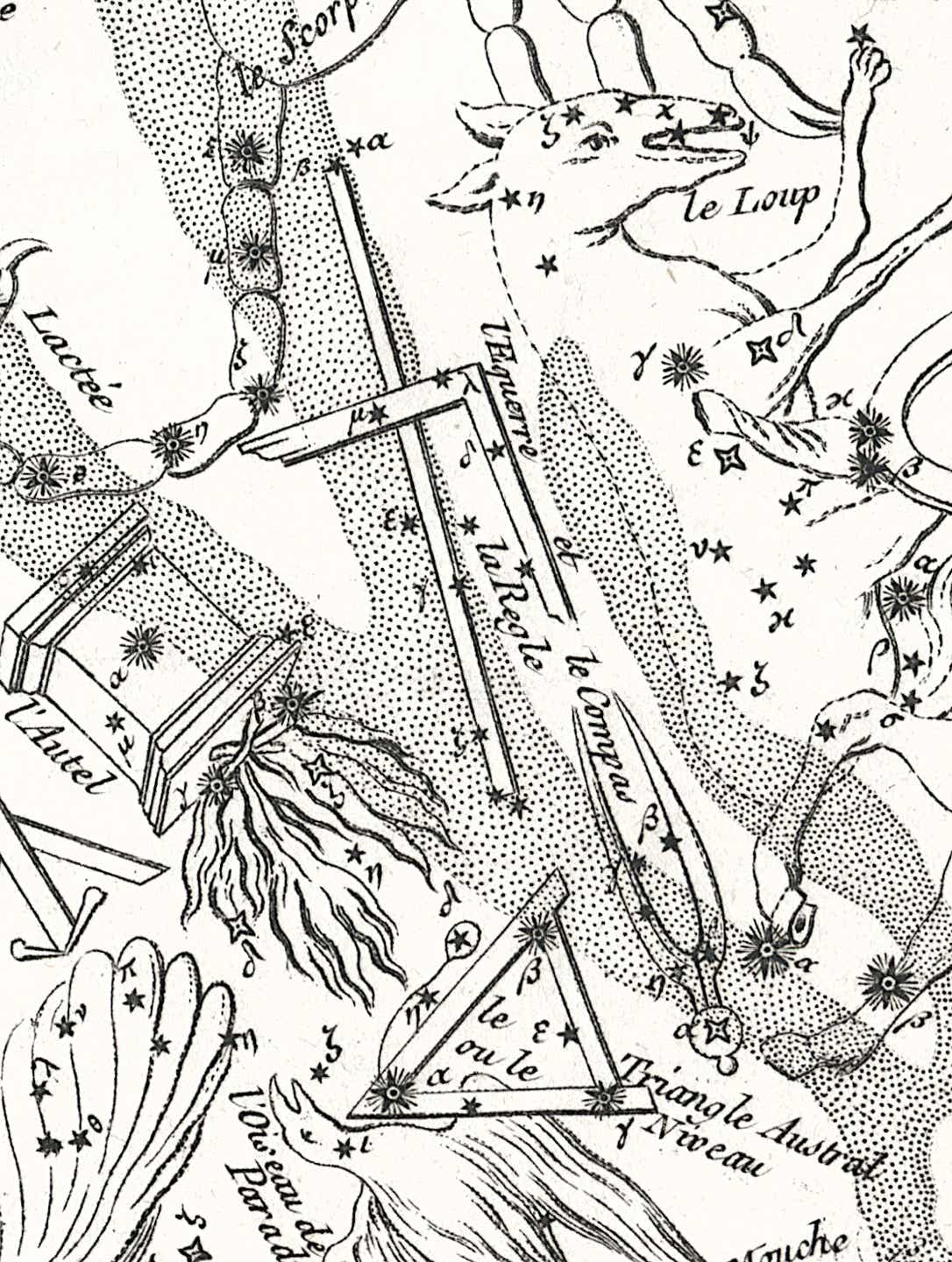Lacaille’s grouping of
Norma, Circinus, and Triangulum Australe
In his chart of the southern stars published in 1756, Nicolas Louis de Lacaille depicted three adjoining constellations as a group of draughtsman’s instruments. The three were: a set square and ruler (l’Equerre et la Regle, which Lacaille Latinized to Norma on the second edition of his chart in 1763); a drawing compass (le Compas, subsequently Circinus); and a surveyor’s level (Triangulum Australe or le Niveau). Norma and Circinus were Lacaille’s own inventions but Triangulum Australe was an earlier invention of Keyser and de Houtman which Lacaille adapted for the purpose. In his book Star Names the historian R. H. Allen mistakenly transferred the name ‘niveau’ (meaning level) from Lacaille’s Triangulum Australe and applied it to Norma.
Lacaille allocated Greek letters to the brightest stars in the constellations on his chart, as Johann Bayer had done for the Ptolemaic constellations. However, the stars in Norma that Lacaille designated Alpha and Beta (see the illustration below) have since been transferred to Scorpius, so the lettering in Norma now begins with Gamma Normae.
This illustration is from Jean-Baptiste Fortin’s Atlas Céleste, a French version of John Flamsteed’s Atlas Coelestis which popularized Lacaille’s new southern constellations. For a zoomable version of Lacaille’s 1763 edition, see here.
(Image: Author’s collection)
© Ian Ridpath. All rights reserved
